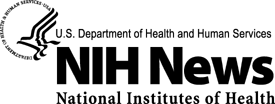 |
|
|
FOR IMMEDIATE RELEASE:
April 7, 1999 #99-05 07 Apr 1999: Women Born with Birth Defects Run Small Risk Their Children Will Have ThemWomen with birth defects have a small risk of also having children with birth defects, researchers in Norway and at the U.S. National Institute of Environmental Health Sciences (http://www.niehs.nih.gov) reported today. Women with birth defects may worry that their children will also have defects, whether the same as the mother's or different. The study published in The New England Journal of Medicine (http://content.nejm.org/) This study used the extensive birth registry of Norway to identify nearly a half-million female babies born between 1967 and 1982, and then to follow them to adulthood and motherhood. Allen Wilcox, M.D., (http://www.niehs.nih.gov/research/atniehs/labs/epi/reproductive/index.cfm) chief of epidemiology (http://www.niehs.nih.gov/research/atniehs/labs/epi/index.cfm) at NIEHS and a collaborator on this project, said, "We found a definite tendency for women with birth defects to also have children with birth defects. But less than 4 percent of these women's offspring were affected, so the absolute risk is small. Also, the only kind of defect with a high risk was the same defect as the mother's. We found no increased risk for other defects." Professors Rolv Skjaerven and Rolv Terje Lie in the division of medical statistics at the University of Bergen (http://www.uib.no/) Women with birth defects were found to have a lower probability of surviving to adulthood, and once they reached adulthood, they were less likely than other women to bear children. "Still, among those who do bear children, the vast majority will have a healthy, unaffected baby," Wilcox said. Note: Phone numbers of contacts are: Allen Wilcox, (919) 541-4660; Rolv Skjaerven, in Bergen, Norway, 011-47-55-974665. |
|


